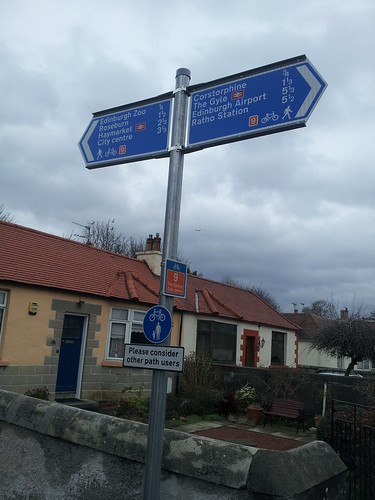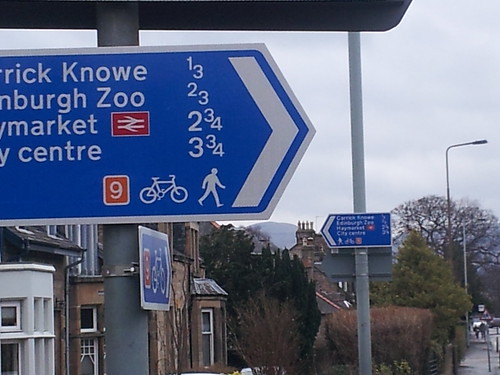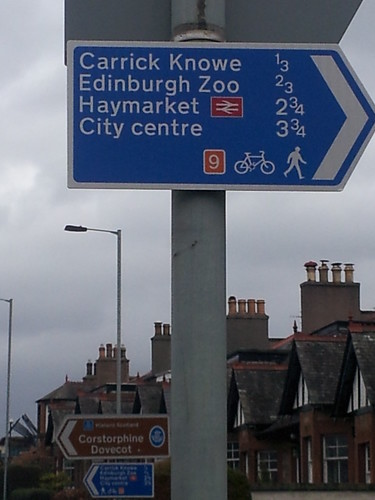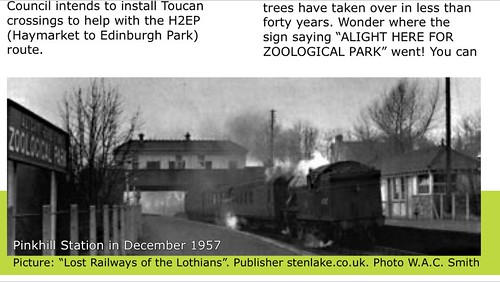So it seems that there are gender differences when it comes to navigation strategies. Men tend to rely on a sense of direction, while women tend to use landmarks. One explanation is that this is a throwback to our hunter-gatherer heritage, where of course the men would typically venture further away from the village than the women.
According to a recent study [pdf]
Male and female subjects were given the task of navigating through an unknown virtual 3D environment and the resulting brain activity was captured with fMRI scanning. While there was a lot of overlap in the activated parts of the brain, a differential analysis showed a significant variation in brain activity between men and women. Women showed greater activity in the left and right pre-frontal regions, while men showed increased levels of activity in the hippocampus.
(The hippocampus is a key component of the limbic structures of the brain, the older (in evolutionary terms) part of our unconscious mind.)
This study has interesting implications. For women, navigation is an intellectual task, just like any other, and because it’s being processed at that level, it’s rational for women to ask for help if they are lost.
For a woman, asking for directions is not an admission of defeat. But for a man, the ability to navigate one's way around operates at an unconscious level. It’s part of who we are, and so it’s subject to irrational behaviours and emotions.
(This probably explains why men are reluctant to ask for directions. And then when we do ask for directions, what happens? You hear the first couple of instructions, if you're lucky, and then the rest is just white noise. Please tell me that this isn't just me.)
It is important to note that women do indeed have a sense of direction. However,
In tests of ability to navigate virtual 3D environments (mazes), there wasn’t a significant difference between men and women in success levels as long as the landmarks were left in place. When these were removed, men showed an ability to keep their bearings and had a significantly higher degree of success (Sandstrom, Kaufman, & Huettel, 1998).
Make of this what you will, but given that it's unlikely for landmarks to be removed in the real world, the whole thing seems somewhat academic to me.
I have already suggested that people need to know how to get around on the network, but I want to know how useful these direction signs are.
Just for example, say we're at Dovecot Road. Firstly, do we really need to be told that Carrick Knowe is 500m away? Is this useful information? And what does it mean? The shops are 500m away? Where are the shops?
Secondly, what are the chances that we will be visiting the zoo today? How often do you go to the zoo? If you don't know where it is, what are you doing on Dovecot Road? Are you lost? If you don't know where it is, why have you not planned your route before setting out?
If you need to plan a route - if you need to refer to a map - the diagrammatic Tube-style map is in fact easier to read, mainly because colour-coding makes route-planning easier.
I tested the London map using the origin and destination examples of a thousand bus journeys. If a bus went from A to B to C to D, I looked at the journeys A to B, A to C, A to D, B to C, B to D and C to D. I found that about 90% of the time, the journey could be described by one, two or three routes. (I think the average was about 2.4 routes per journey.)
So you would plan your route before setting off, and then the chances are that you would need to remember just a couple of pieces of route information. And if you forget whether it is R2 or R3 or whatever, the map is small enough to fit into your back pocket.
Now, Focus's point about the need for direction signs at strategic locations (as a sort of back-up) is entirely correct, but as I pointed out in the cycle network thread, do these signs need to be aimed specifically at cyclists, or can they just be general information signs aimed at a general audience? Just asking ...





 posts
posts
